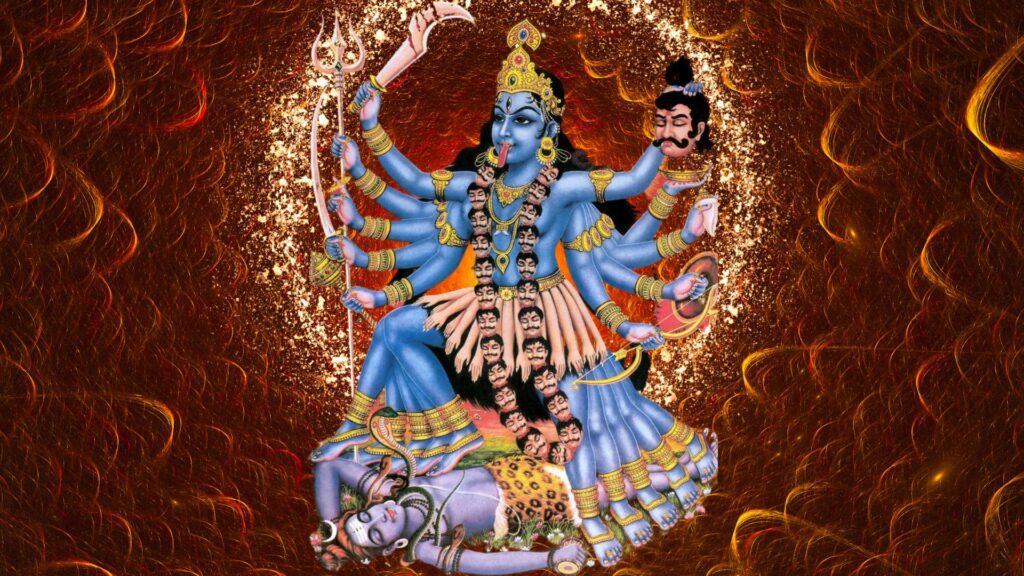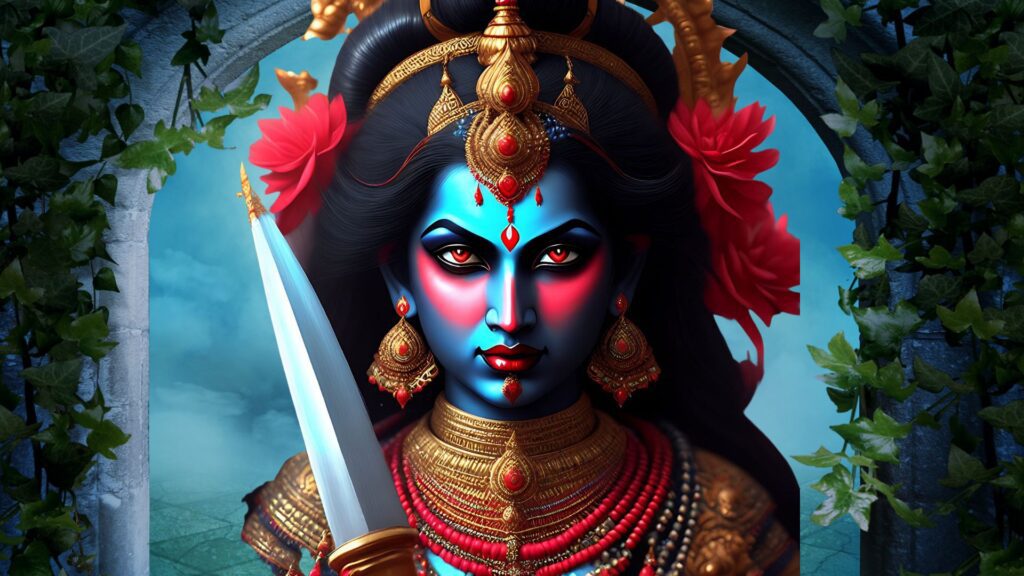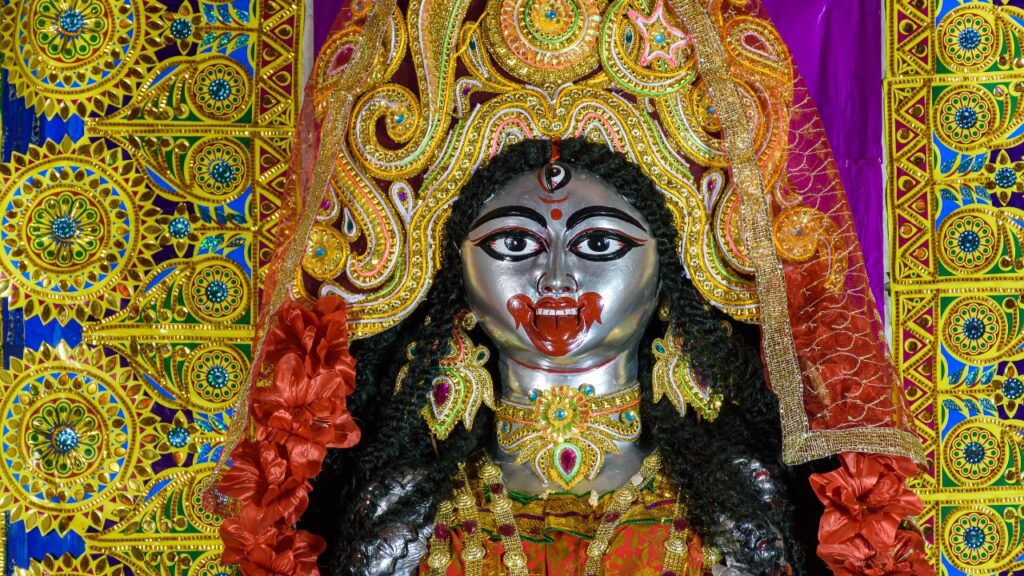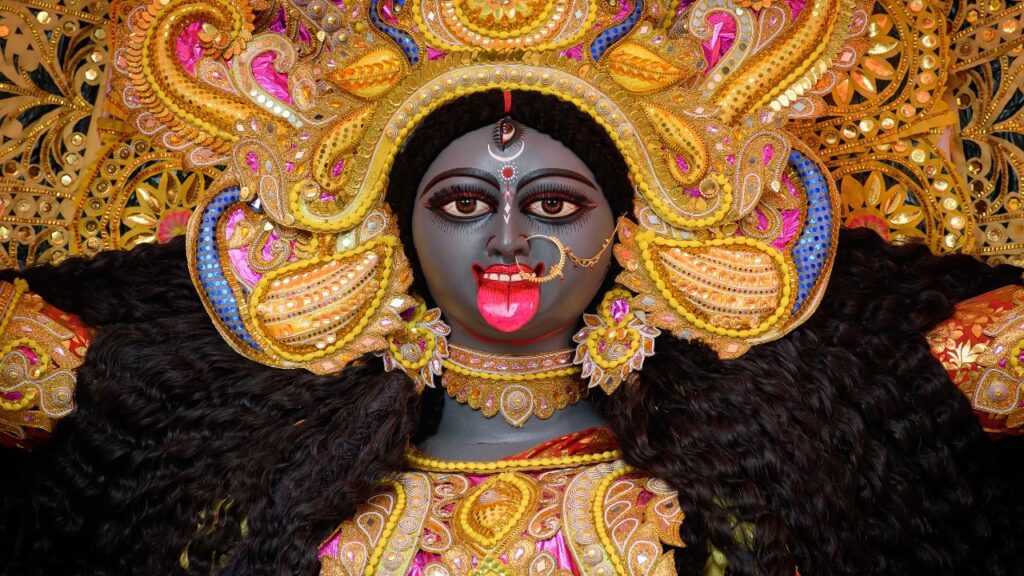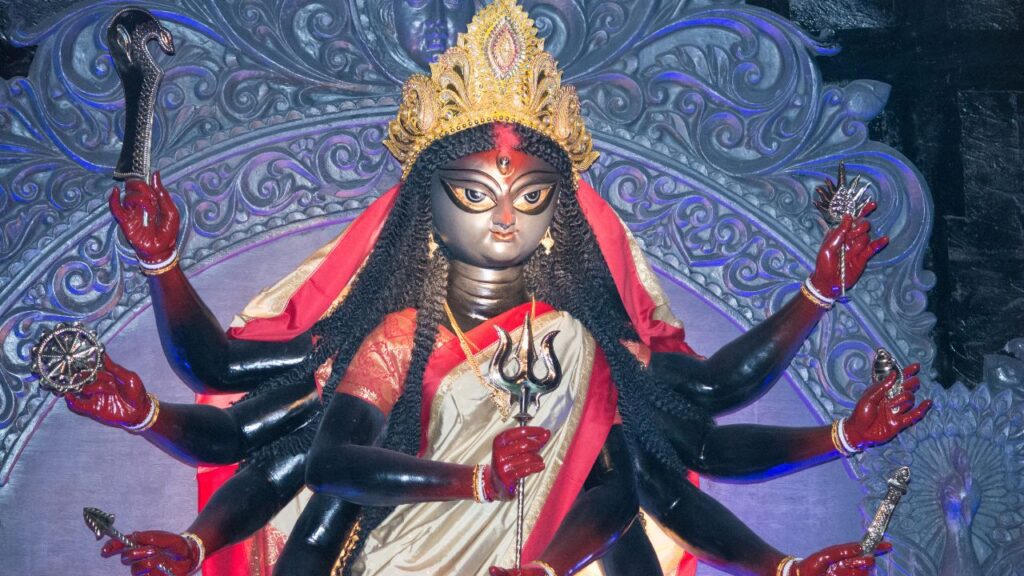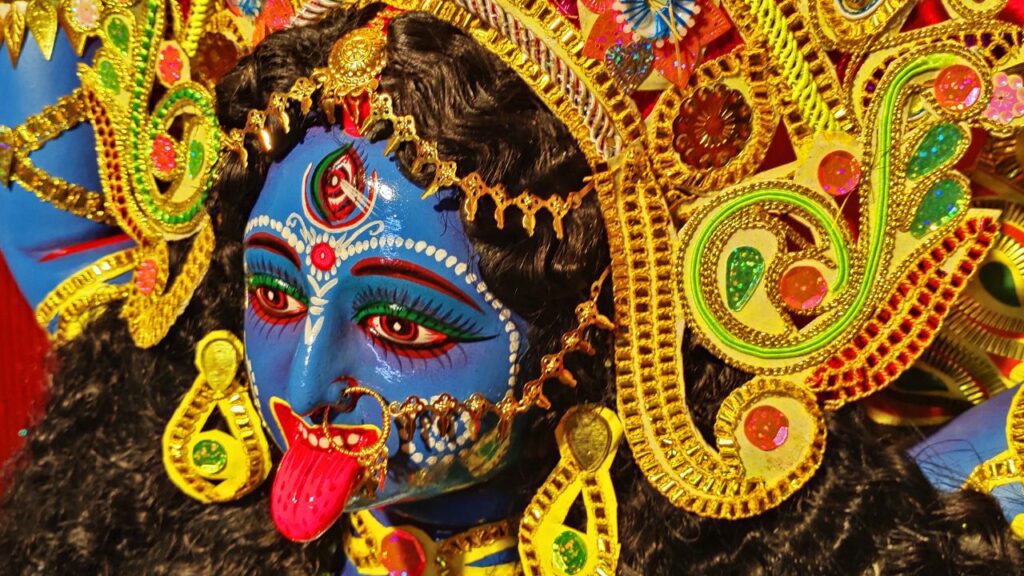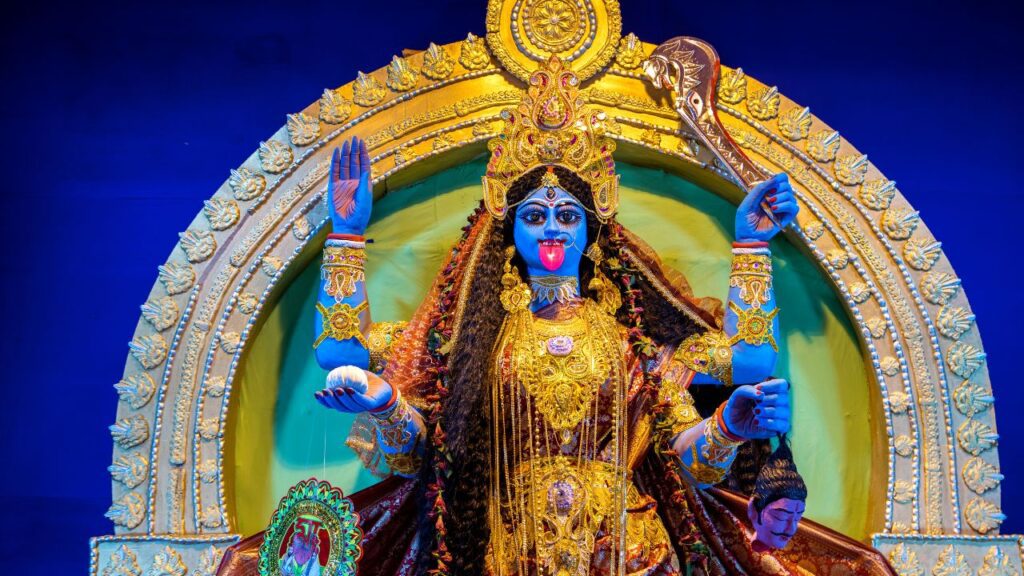Kali and Tantra: Role of Kali in Tantric Practices
Introduction
Within Hindu mysticism and tantric philosophy, the divine feminine has traditionally been held in a respected and multifarious role. Among the most fascinating and strong of these feminine goddesses is Kali, whose ferocious and transforming might has motivated both academics and followers. I find myself pulled to investigate the fascinating similarities between these two goddesses of desire, creation, and the duality of human experience as I demolish Kali’s altar and turn my attention to the seductive Aphrodite.
Understanding the Essence of Tantra
Originating on the Indian subcontinent, Tantra is a multifarious spiritual tradition with origins in Hinduism and Buddhism originating about 500 BCE. Although there is no one agreed upon definition of tantra, it refers to a wide range of beliefs, methods, and approaches meant to help one achieve spiritual release and a closer relationship with the divine.
Tantra’s Special Method of Desire
Tantricism stands out mostly for its acceptance of desire as a basic component of the human experience rather than for its rejection or repression. Unlike the generally austere inclinations of Hinduism and Buddhism, tantra acknowledges desire as a necessary instrument for spiritual development and transformation. We can reach a better state of consciousness and a more deep connection with the divine by means of positive and deliberate channeling of our needs.

Emphasizing embodiedness in Tantra
Rather than concentrating just on transcendence and renunciation, Tantra’s method of spirituality stresses the need of the physical body and the material world. Tantric practitioners strive to contact the divine by way of the body and the senses by means of several techniques including visualizations, mantras, and rituals. Hinduism and Buddhism have more detached practices than this immersed approach to spirituality.
The fierce and transforming goddess Kali
Often connected with death, destruction, and the transforming qualities of the divine feminine, the goddess Kali stands out as a potent and multifarious presence within the rich fabric of Hindu mythology.
Kali’s Dual Character
Complex and representing both the terrible and the life-giving sides of the divine, Kali is She is, on one hand, a sharp and relentless force able to destroy evil and bring the universe back into equilibrium. Her iconography usually shows her with a wild, messy look, her tongue showing, and her necklace of chopped heads. Conversely, though, Kali is also adored as a goddess of fertility, sexuality, and the creative force of the universe.
Kali’s Place in Tantric Methodologies
Within the framework of tantric spirituality, Kali is revered as a goddess of sexual energy and connection most of the times. Whereas Kali depicts the dynamic, always shifting Shakti, or cosmic feminine force, her consort, the god Shiva, stands for pure consciousness. By means of the unification of these two complimentary forces, tantric practitioners aim to reach a state of unity with the divine and a better knowledge of the cyclical character of life, death, and reincarnation.
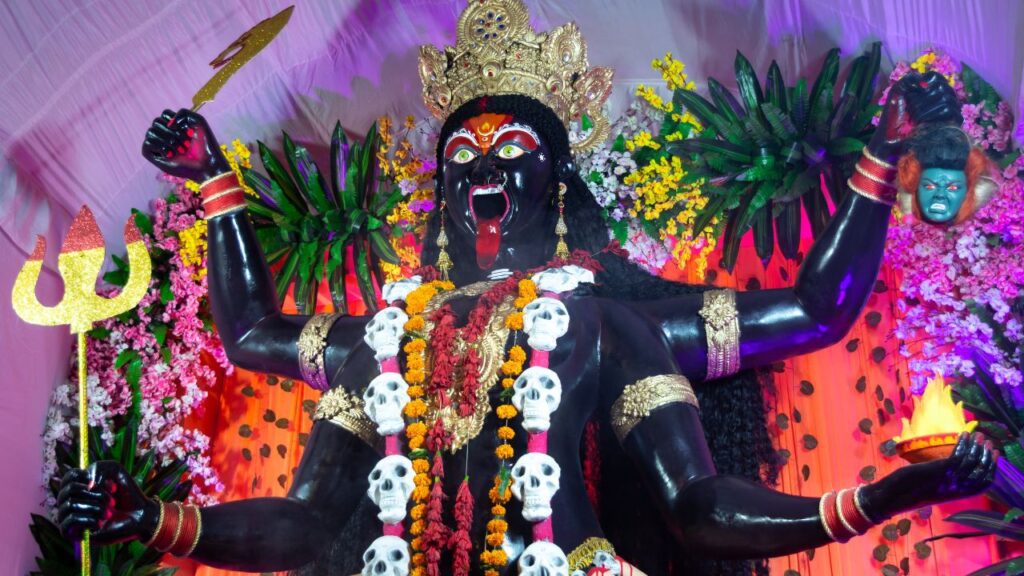
Comparisons Between Kali and Aphrodite
Although Kali and the Greek goddess Aphrodite originate from such different theological and cultural backgrounds, their heavenly purposes and the part they perform in the field of desire, creation, and the human experience show fascinating parallels.
The multifarious nature of Aphrodite
Like Kali, Aphrodite is a multifarious and complicated goddess most usually connected with sexuality, love, and beauty. She is, thus, a goddess of both sensual desire and the creative powers of life since she also controls facets of marriage, fertility, and procreation. Although Kali’s more cosmic and transforming powers may be understood as antithesis to Aphrodite’s earthier and more sensuous nature, both of which are very necessary in preserving the cycle of life.
The Transformative Authority of Need
Kali and Aphrodite question accepted ideas of desire and its position in spiritual development. Tantra provides a useful foundation for interacting with these goddesses since it stresses on accepting all sides of the self, including our wants and physical feelings. By means of self-acceptance and self-love, we can learn to direct our needs in a constructive and transforming manner, so using them as a tool for human development and a closer relationship with the divine.
Kali’s Fierce Visibility and the Denying of Illusions
As Kali challenges us to face our innermost anxieties, shadows, and illusions, her forceful and unreserved presence may be a potent driver of human development. Her capacity to remove the mask of maya, the illusion of separateness, can be both terrible and freeing, calling us to welcome the whole range of our existence.
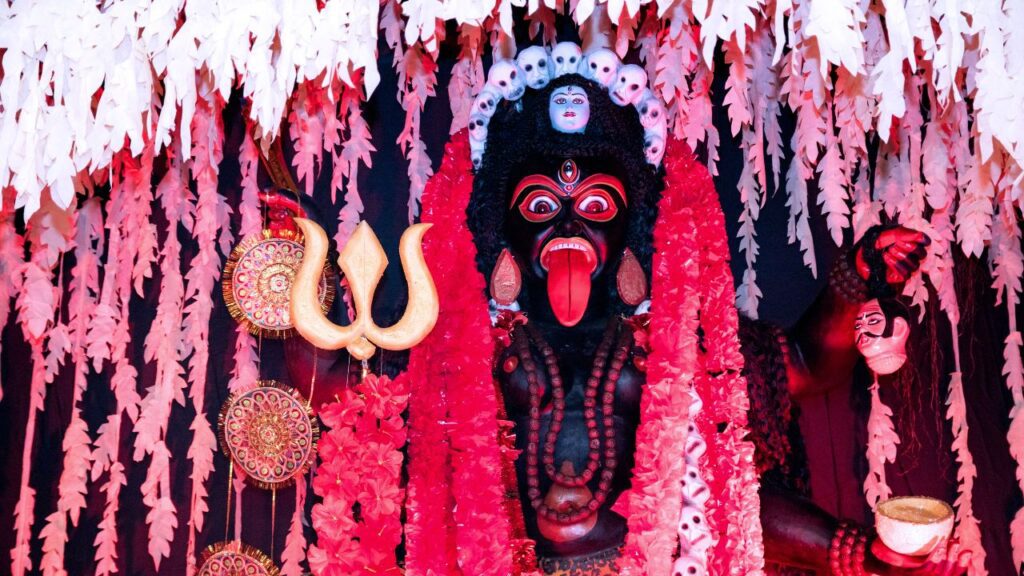
The Destroying of the Ego
In her most strong and destructive forms, Kali is supposed to destroy the ego—that false feeling of self that keeps us apart from the divine. This process of ego-dissolution demands us to let go of the comfy stories and identities we have created, so it can be quite disturbing. Still, it is by means of this deconstruction that we might reach a deeper, more real connection with the underlying unity of all life.
Transformational Power of Kali
Kali’s transforming ability goes beyond only erasing the ego; she also has the ability to revitalize and replenish the earth. Her dance of creation and destruction is evidence of the cyclical character of life, in which ends always lead to new beginnings. Embracing Kali’s energy will help us to negotiate the tides of our own life with more resilience and flexibility.
Gentle Guidance of Aphrodite and Shadow Healing
Unlike Kali’s sharp and unyielding presence, the goddess Aphrodite presents a more mild and caring way for one to investigate the self and desire. Her vitality is sometimes connected with love, beauty, and the shadow and wound healing process.
Invite to Self-Love: Aphrodite
Aphrodite’s main gift to her followers is the encouragement to grow self-love and self-acceptance. We can start to release the guilt and shame that so often accompany our human experience by accepting the whole range of our wants and feelings. Aphrodite’s soft direction can assist us negotiate the complexity of our inner terrain and lead us toward a more whole and merged sense of ourselves.
Aphrodite’s Part in Tantric Methodologies
In the framework of tantric spirituality, Aphrodite’s vitality can be a potent ally to Kali’s transforming power. Working with both goddesses will help us to negotiate the interaction between the nouraging, restorative energies that enable us to heal and flourish and the raw, uncompromising components of our nature. One great road towards wholeness and a closer relationship with the divine is this interweaving of energies.
Duality of the Divine Feminine
Though in different forms, the goddesses Kali and Aphrodite finally reflect the duality and complexity of the divine feminine. Both essential components of the same cosmic energy, they each provide special insights and invitations for spiritual development.
The Divine Yin and Yang
Kali’s strong and destructive energy stands for the yang—that is, the dynamic and forceful nature of the divine woman. Conversely, Aphrodite’s soft and soothing presence captures the yin—that which is nurturing and receptive—of the divine. Collectively, they create a harmonic balance, each strengthening and balancing the other to reflect the basic duality guiding all of life.
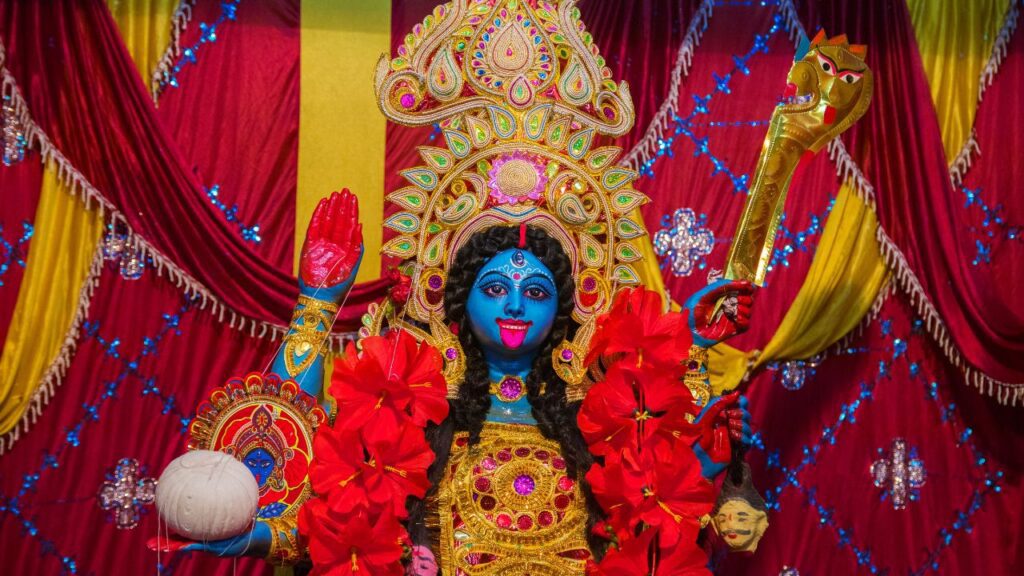
The Union of Opposites
Tantric philosophy stresses the need of combining these competing energies inside the self since it is only when we welcome the whole spectrum of our existence that we may reach true wholeness and enlightenment. Working with both Kali and Aphrodite will help us to negotiate the polarities of our nature and discover the grace and resiliency to more naturally and authentically negotiate the tides of life.
Kali’s Denying of the Divine
Kali’s mythology features among its most potent and symbolic elements her capacity to “kill the Divine” and thereafter bring life back to the fallen god. This picture, depicting Kali triumphantly over Shiva’s body, her consort, is evidence of her command over the very fabric of life.
Mastery of Life and Death:
This scene, in the tantric tradition, shows Kali’s power and mastery over the cycle of life and death at last. It marks a degree of spiritual power whereby the practitioner may not only destroy the divine but also bring fresh life into it. This bold act of authority is evidence of the transforming ability of the tantric road.
The Denying of Illusion
Deeper still, Kali’s “kill the Divine” action might be seen as the destruction of the illusion of separateness—the mistaken belief that the divine and the human are different and apart. Kali creates the path for a direct, unmediated perception of the unity underlying all of life by destroying this delusion. By means of this process of deconstruction and rebuilding, the tantric practitioner might reach a degree of mastery over the very fabric of reality.
Tantral Embodied Spirituality
Unlike more detached traditions of Hinduism and Buddhism, Tantra’s original approach to spirituality emphasizes strongly the part of the physical body and the material universe. The several tantric techniques and rites involving the control of the body, senses, and subtle energies mirror this embodied viewpoint.
Tantric customs and ceremonies
The tantric practice of decapitation—where practitioners are supposed to remove their own heads and then reattach them—is among the most remarkable illustrations of this embodied spirituality. Although this seems like a startling and radical practice, it is emblematic of the tantric belief in the capacity to destroy and reassemble the fundamental core of existence itself. Other tantric rites could call for visualizations, mantras, and the activation of particular energy centers within the body.
Combining the Physical and Spiritual
Tantric questions the conventional divide between the sacred and the profane by accepting the physical body and the material world as essential to the spiritual path. It acknowledges that the divine is something one may personally feel and use directly by means of the deliberate use of the senses and the physical form, not something to be reached by renunciation and transcendence.
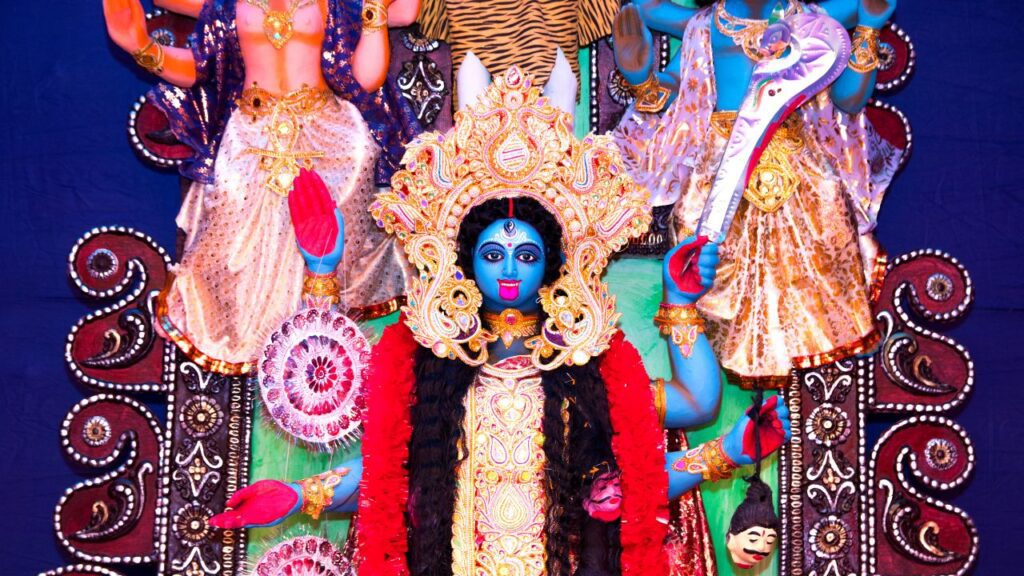
The Transformative Authority of Desire
The core of tantric philosophy is the understanding of desire as a basic feature of the human experience rather than something to be denied or controlled. Different from the more austere inclinations of Hinduism and Buddhism is Tantra’s embracing of desire as a means for spiritual development and transformation.
Dream as a Transformational Catalyst
Tantric practitioners try to reach a higher state of consciousness and a closer relationship with the divine by means of positive and deliberate channeling of our wants. This practice of working with desire instead of against it forces us to face and combine the whole spectrum of our existence, therefore acting as a potent catalyst for personal development and transformation.
Value of Self-acceptance
Development of self-acceptance and self-love is absolutely fundamental to this process of coping with desire. We can start to release the guilt and shame that so frequently accompany our human experience as we learn to accept the whole of our needs, emotions, and bodily sensations. Unlocking the transforming power of desire and orienting ourselves with the creative and life-affirming forces of the divine feminine requires this path of self-acceptance.
Conclusion: Tantra’s Constant Wisdom
With its complex tapestry of deities, techniques, and philosophical insights, the spiritual tradition of tantra presents a deep and multifarious method to the human experience. At the core of this custom is the inspiring presence of the goddess Kali, whose ferocious and transforming force has enthralled both academics and followers.
By means of Kali’s dual nature, her participation in tantric rites, and her analogies with the Greek goddess Aphrodite, we can better appreciate the duality and complexity of the divine feminine. Using the lessons of tantra, we can learn to negotiate the ebbs and flows of our own wants, feelings, and shadows, so attaining a higher state of awareness and a closer relationship with the divine.
We are reminded of the continuing wisdom and importance of this old spiritual tradition as we keep trying to understand tantra. Tantric practice invites us to embrace the totality of our being and to use the transforming power of desire for the benefit of our spiritual development and the greater good of all, so offering a radical and empowering alternative in a society too frequently seeking to separate and suppress the fullness of our human experience.
#tantra #blackmagic #energy #kali

